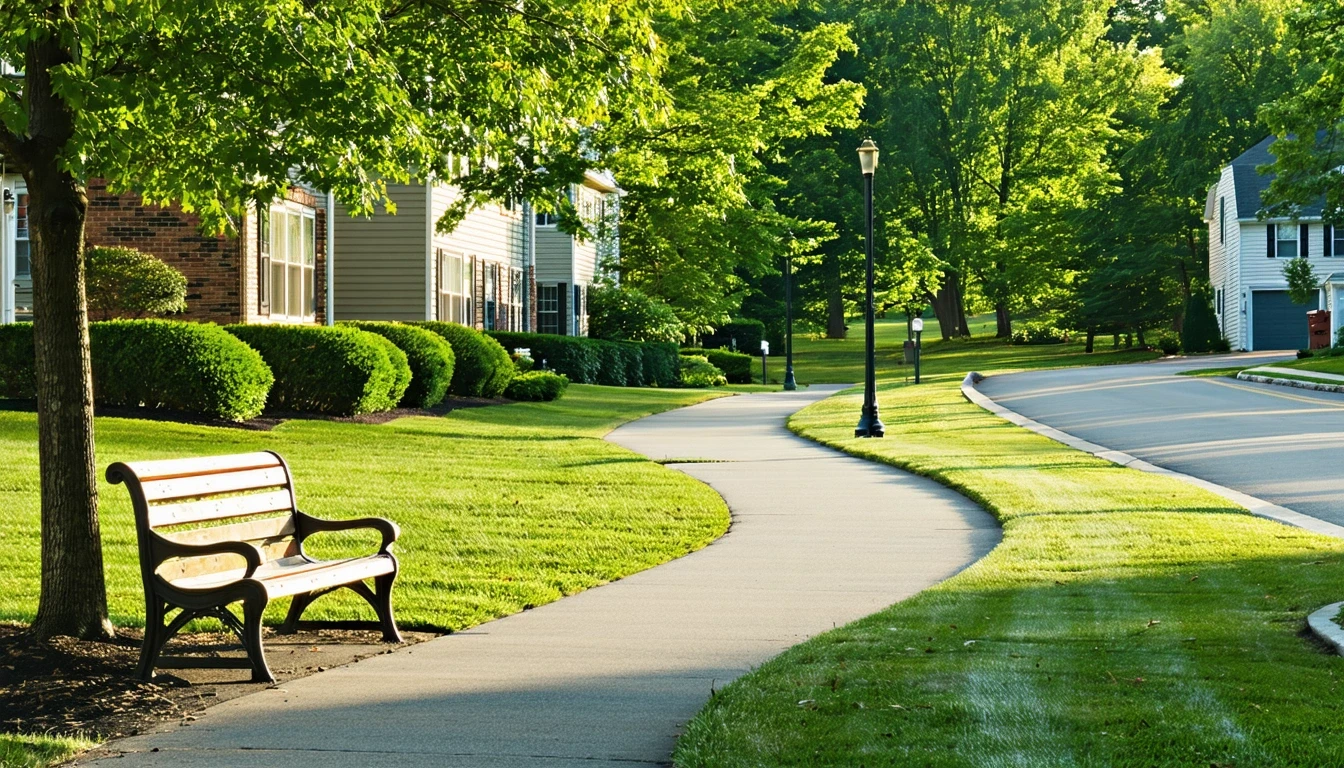
Washington, DC vs. Arlington, VA: Cost of Living Comparison (2025)
Choosing between Washington, DC and Arlington, VA? Here’s a rapid-fire comparison of key costs in 2025:
- Median home price: $689,000 in DC vs. $810,000 in Arlington
- Average 2BR rent: $2,550/month in DC vs. $2,900/month in Arlington
- Estimated utility bills: $180/month in DC vs. $210/month in Arlington
- Typical grocery costs: 5-10% lower in DC than Arlington
As the nation’s capital, Washington, DC attracts residents seeking urban amenities, cultural attractions, and proximity to government jobs. Just across the Potomac River, Arlington offers a mix of city access and suburban living popular with families and professionals.
While both cities boast a high quality of life, cost of living is often the deciding factor for those relocating to the DC metro area in 2025. Housing, utilities, groceries, and taxes can vary significantly between Washington and Arlington, impacting how far your budget stretches each month.
Housing Costs
Housing is the biggest expense for most households, and prices differ notably between Washington and Arlington. In 2025, the median home price in DC is around $689,000, while Arlington homes average $810,000.
Rents also tend to be higher in Arlington. A typical 2-bedroom apartment goes for $2,900 per month compared to $2,550 in DC. Larger units command even steeper premiums, with 3-bedroom rentals averaging over $3,500 monthly in Arlington.
| Housing Type | Washington, DC | Arlington, VA |
|---|---|---|
| Median Home Price | $689,000 | $810,000 |
| Average 2BR Rent | $2,550 | $2,900 |
| Average 3BR Rent | $3,100 | $3,550 |
For families seeking space, DC offers a wider selection of row houses and detached homes at relatively lower prices. Young professionals may find better rental value in DC’s many centrally located apartments.
With housing costs 15-20% lower across the board, Washington comes out ahead for both buyers and renters.
Utilities and Energy Costs
Utility bills are another important consideration, especially with seasonal temperature swings in the Mid-Atlantic. DC residents typically pay around $180 per month for electricity, gas, water and sewer. Costs are about 15% higher in Arlington, averaging $210 monthly.
Older homes and apartments, more common in DC, may have lower-efficiency heating and cooling systems. However, Arlington’s larger average home sizes often translate to higher overall energy usage.
Families can expect utility costs to rise by 20-30% due to higher occupancy and greater heating/cooling needs. Newer construction in both cities tends to have better insulation and more efficient mechanicals, helping control utility expenses.
With lower base utility costs for most households, Washington has the edge over Arlington.

Groceries and Daily Expenses
Grocery bills are 5-10% lower in DC compared to Arlington, thanks to more large-format supermarkets and discount retailers. A gallon of milk averages $3.60 in DC versus $3.90 in Arlington, while a loaf of bread is around $2.80 and $3.10 respectively.
Dining out is marginally cheaper in DC as well. A typical fast-casual meal runs about $12, while sit-down dinners average $25-30 per person. Similar meals cost 5% more in Arlington.
Larger families will feel the impact of these small differences much more than singles or couples. Frequently cooking at home and shopping strategically helps keep food costs manageable in both cities.
With consistently lower prices on groceries and restaurants, Washington wins the affordability contest for daily expenses.
Taxes and Fees
Taxes are another key differentiator between DC and Arlington. DC’s property tax rate is 0.85%, while Arlington homeowners pay 1.013% of assessed value. For a median-priced home, that’s a difference of about $1,400 per year.
Sales taxes are identical at 6%, but DC has higher excise taxes on alcohol, tobacco, and fuel. Parking fees and traffic citations also tend to be steeper in the District.
Virginia levies annual vehicle property taxes, while DC does not. For a $20,000 car, Arlington residents pay an extra $380 per year on average.
Renters can usually avoid property tax differences, but may still pay more for parking and resident fees in Arlington complexes. With lower property taxes and fewer add-on costs, DC gets the nod over Arlington.
Cost of Living Comparison Table
| Category | Washington, DC | Arlington, VA |
|---|---|---|
| Housing (Rent/Mortgage) | $2,100 | $2,500 |
| Utilities | $180 | $210 |
| Groceries | $400 | $440 |
| Transportation | $140 | $160 |
| Taxes | $620 | $740 |
| Miscellaneous | $350 | $380 |
| Estimated Monthly Total | $3,790 | $4,430 |
The table above compares average monthly expenses for a mid-size household in Washington and Arlington. It assumes a 2-bedroom rental apartment or a 3-bedroom home at median prices for each city.
Based on these estimates, a typical family would spend around $3,790 per month living in DC. The same standard of living costs $4,430 monthly in Arlington. That’s a difference of $640 per month or $7,680 per year.
Methodology: Estimates reflect 2025 costs for a mid-size household (2-bedroom apartment or 3-bedroom home) using published data and regional benchmarks. Actual expenses vary with household size, lifestyle, and neighborhood.
Lifestyle Fit
Of course, cost is just one factor in deciding where to live. Lifestyle considerations like commute times, neighborhood amenities, and recreation opportunities also matter.
DC offers unparalleled access to cultural institutions, historical landmarks, and diverse dining and nightlife. Many neighborhoods are highly walkable, with extensive public transit and bike lanes. Commuters can reach most government agencies and downtown offices within 30 minutes.
Arlington has a more suburban feel, with leafy streets, ample parks, and larger homes. Retail centers and restaurants cluster along major corridors like Wilson Boulevard and Clarendon. The Metrorail system provides easy access to DC, with most trips taking 20-40 minutes.
For families, Arlington’s highly rated public schools and lower crime rates may be worth the extra housing costs. Singles and young professionals often prefer DC’s vibrant urban energy and social scene.
Ultimately, the right choice depends on your priorities and stage of life. Balancing budget, commute, and neighborhood preferences will help you decide whether Washington or Arlington is the better fit.
Frequently Asked Questions
Is Washington more affordable than Arlington in 2025?
Yes, Washington, DC has a lower overall cost of living than Arlington, VA in 2025. Housing, utilities, groceries, and taxes all tend to be 10-20% cheaper in DC.
How do rental prices compare between Washington and Arlington?
Rents are significantly lower in Washington, with a typical 2BR apartment going for $2,550 per month versus $2,900 in Arlington. Larger units are even more affordable in DC relative to Arlington.
Are grocery costs higher in Arlington than Washington?
Grocery prices average 5-10% higher in Arlington compared to Washington. Expect to pay more for everyday staples like milk, bread, and produce when shopping in Arlington.
Do utility bills tend to be higher in Washington or Arlington during the winter?
While winter heating costs are similar, Arlington residents usually pay about 15% more for utilities overall. Larger home sizes in Arlington contribute to higher energy usage and monthly bills.
How much could a family save by choosing to live in Washington over Arlington in 2025?
A typical family of four would save around $640 per month on housing, food, utilities and taxes by living in Washington instead of Arlington. That adds up to over $7,600 in annual savings.
The Bottom Line
While both cities offer a high quality of life, Washington edges out Arlington on affordability in 2025. Lower costs for housing, utilities, groceries and taxes let DC residents save $600+ per month compared to their Arlington neighbors.
Families and budget-conscious households may find their dollars stretch further in DC. However, Arlington’s suburban comforts, top-notch schools, and low crime rates still appeal to many.
Carefully weigh the tradeoffs in cost of living, commute times, and neighborhood amenities as you decide between these two DC-area hubs. Estimating your monthly expenses in Washington or exploring the full cost of living breakdown can help you make the right choice for your needs and budget.
Once you’ve settled on a city, compare moving companies to get the best rates and service for your relocation. With careful planning and smart choices, you can enjoy all the benefits of living in the DC metro area without breaking the bank.
